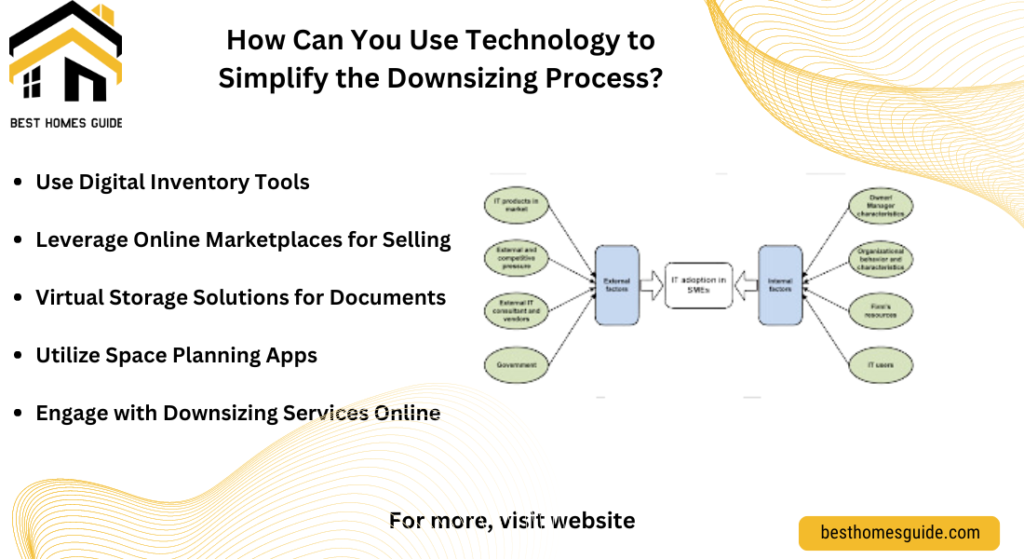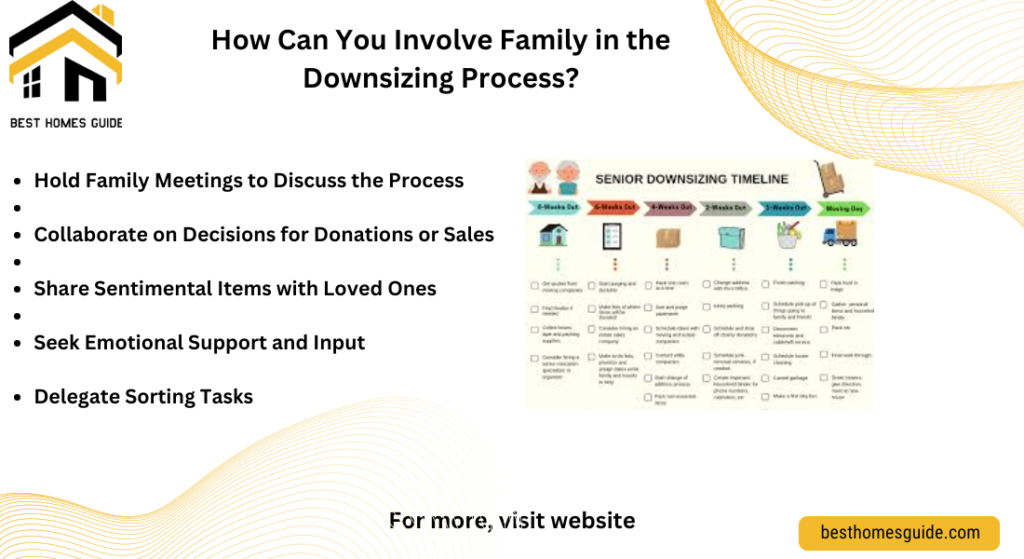Downsizing tips can be a transformative and liberating experience, offering a chance to simplify your life and embrace a more manageable living space. Whether you are transitioning to a smaller home, relocating to a new area, or just seeking a fresh start, effective downsizing involves careful planning and strategic decision-making. This process can help reduce the stress of moving, streamline your belongings, and ultimately lead to a more enjoyable and less cluttered lifestyle. In this guide, we’ll explore essential tips and strategies to help you navigate the downsizing journey with confidence and ease.
Decluttering, downsizing checklist, Moving tips, Simplifying life, Home organization, Minimalism, relocating, Smaller living space, Transition tips, Moving house advice.
How Can You Effectively Plan for Downsizing?
Effective planning is crucial for a successful downsizing Tips process. Begin by setting clear goals and timelines for your move. Create a detailed plan that includes the key steps involved in downsizing, such as sorting through your belongings, choosing a new home, and coordinating the logistics of the move. Establishing a timeline helps keep the process organized and ensures that you address each task methodically.
Consider creating a Downsizing tips checklist to help guide you through each stage of the process. This checklist can include tasks like measuring new spaces, organizing items into categories (keep, donate, sell, discard), and scheduling appointments with real estate agents or movers. Planning ahead allows you to manage your time effectively and reduce the stress associated with downsizing.
What Strategies Help with Decluttering Before a Move?
Decluttering is a fundamental part of Downsizing tips and requires a strategic approach to ensure efficiency. Start by tackling one room or category of items at a time to avoid feeling overwhelmed. Use the “Four-Box Method” where you sort items into four categories: keep, donate, sell, and discard. This method simplifies the decision-making process and helps you stay organized.
An effective strategy is to assess each item’s utility and sentimental value. Ask yourself if the item is used frequently, if it has a meaningful emotional connection, or if it aligns with your new lifestyle. For items that are difficult to part with, consider taking photos to preserve memories. Streamlining your possessions before a move not only makes the transition smoother but also helps create a more organized and functional new living space.
How Do You Decide What to Keep and What to Let Go?
Deciding what to keep and what to let go of during Downsizing tips involves a thoughtful evaluation of your possessions. Start by considering the functionality and necessity of each item. Keep items that serve a practical purpose or hold significant sentimental value. For example, essential household items, heirlooms, or pieces that fit well into your new space should be prioritized.
And evaluate how well each item fits into your new lifestyle. If you are moving to a smaller home, focus on keeping items that are both space-efficient and versatile. Consider whether an item will be used regularly in your new environment. Be honest about the practicality of keeping large or rarely used items, and make decisions based on how they align with your current needs and space constraints. This approach helps ensure that your new home is both functional and clutter-free.

What Are the Best Practices for Selling Your Home During Downsizing?
Selling your home effectively is a key component of the downsizing process. Begin by preparing your home for sale through staging and minor repairs to enhance its appeal to potential buyers. Focus on decluttering and organizing the space to create a clean, welcoming environment. Professional staging or even a fresh coat of paint can make a significant difference in how quickly your home sells and at what price.
work with a reputable real estate agent who has experience in selling homes in your area. An agent can provide valuable insights on pricing strategies, market trends, and marketing techniques to attract buyers. Ensure your home is listed with high-quality photos and detailed descriptions to capture interest. Pricing your home competitively and being flexible with showings can also help expedite the selling process.
How Can You Choose the Right New Home for Your Downsized Lifestyle?
Choosing the right new home is crucial for a successful Downsizing tips experience. Start by evaluating your needs and preferences, such as location, size, and amenities. Consider whether you want to live in a retirement community, a smaller single-family home, or an apartment. The new home should align with your lifestyle goals and offer the features that matter most to you, such as proximity to family, accessibility, or recreational facilities.
It is also important to visit potential new homes and assess how well they meet your needs. Take note of the layout, storage options, and any modifications that might be necessary. Working with a real estate agent who understands your Downsizing tips goals can help you find a home that fits your criteria and supports your new, simplified lifestyle. This careful consideration ensures that your new living space is both comfortable and suitable for your needs.
What Are the Financial Implications of Downsizing?
Downsizing can have various financial implications that should be carefully considered. One of the primary benefits is the potential to reduce monthly expenses, such as mortgage payments, property taxes, and utility costs. By moving to a smaller home or one with fewer maintenance needs, you can lower your overall cost of living. Selling your current home might provide a significant amount of equity that can be used to support your new lifestyle or invested for future needs.
There are also costs associated with Downsizing tips, including moving expenses, real estate agent fees, and potential renovations in your new home. It is important to factor in these costs when planning your downsizing strategy. Conducting a thorough financial assessment and consulting with a financial advisor can help you navigate these implications and make informed decisions that support your long-term financial health.
How Can You Manage the Emotional Aspects of Downsizing?
Downsizing can be an emotional process, as it often involves leaving behind a home filled with memories and adjusting to a new way of life. To manage the emotional aspects effectively, start by acknowledging and accepting your feelings. It’s normal to feel a mix of nostalgia, anxiety, and excitement. Talking about your emotions with family members or a counsellor can provide support and perspective during this transition.
A helpful strategy is to focus on the positive aspects of Downsizing tips. Embrace the opportunity to create a new, more manageable living space that suits your current lifestyle and needs. Engaging in activities that celebrate the memories associated with your old home, such as creating a photo album or holding a farewell gathering, can help ease the transition. By maintaining a positive outlook and focusing on the benefits of your new living arrangement, you can navigate the emotional challenges of downsizing more smoothly.

What Tools and Resources Can Assist with the Downsizing Process?
Several tools and resources can streamline the downsizing process and make it more manageable. Digital tools, such as inventory management apps, can help you keep track of your belongings and decide what to keep, donate, or sell. Apps like Sortly or Encircle allow you to catalog your items and even create digital floor plans for your new home.
Professional services can also be invaluable. Moving companies that specialize in Downsizing tips or senior relocation services offer assistance with packing, organizing, and setting up your new home. Estate sale companies or consignment shops can help you sell or donate items you no longer need. Utilizing these tools and services can simplify the downsizing process, reduce stress, and ensure a smoother transition to your new home.
How Can You Ensure a Smooth Transition to Your New Home?
Ensuring a smooth transition to your new home involves careful planning and organization. Begin by creating a moving checklist that outlines each step of the process, from packing and labeling boxes to scheduling utilities and change-of-address notifications. Planning ahead helps ensure that you don’t overlook important tasks and can make the move more efficient.
you arrive at your new home, take time to unpack and organize systematically. Start with essential items and gradually set up each room according to your new space’s layout. Engaging with your new community by attending local events or joining neighborhood groups can also help you acclimate and feel more at home. By staying organized and proactive, you can ease the transition and quickly settle into your new environment.
What Are the Key Features of a Successful Downsizing Plan?
A successful downsizing plan should encompass several key features to ensure a smooth transition. Start by setting clear, realistic goals and a timeline for each phase of the Downsizing tips process. This includes planning for sorting and decluttering, preparing your home for sale, and moving to your new residence. Establishing a detailed timeline helps keep the process organized and reduces last-minute stress.
An incorporates a comprehensive checklist that covers all necessary tasks, such as arranging for appraisals, scheduling moving services, and notifying change-of-address. A successful plan also involves budgeting for any associated costs, including moving expenses and potential renovations. By addressing these elements, you can create a structured approach to Downsizing tips that minimizes disruption and supports a successful transition.
How Can You Use Technology to Simplify the Downsizing Process?
Technology can play a significant role in simplifying the Downsizing tips process and making it more efficient. Digital tools such as inventory management apps allow you to catalog and organize your belongings systematically. Apps like Sortly or Evernote can help you create a digital inventory, track items, and decide what to keep, donate, or sell.
To inventory management, consider using virtual tour software or floor planning tools to visualize how your belongings will fit in your new space. Virtual staging tools can help you arrange and visualize different layouts before moving. Online platforms for selling items, such as Facebook Marketplace or Craigslist, can also facilitate the sale of unwanted items. By leveraging these technological resources, you can streamline the downsizing process and make informed decisions about your move.

How Can You Make the Most of Your New Downsized Space?
Making the most of your new downsized space involves optimizing both functionality and comfort. Begin by carefully planning the layout of your new home to ensure that it meets your needs and maximizes available space. Invest in space-saving furniture and storage solutions, such as multifunctional pieces or built-in storage, to help you stay organized and make the most of your reduced living area.
focus on creating a comfortable and inviting atmosphere by incorporating personal touches that reflect your style and preferences. Use decor and color schemes to make the space feel warm and welcoming. Emphasize areas that enhance your lifestyle, such as a cozy reading nook or a well-organized kitchen. By thoughtfully arranging and decorating your new home, you can create a functional and enjoyable living environment that complements your downsized lifestyle.
What Are Common Mistakes to Avoid When Downsizing?
Downsizing can be a complex process, and avoiding common mistakes can make it more manageable and successful. One common error is failing to plan adequately for the downsizing process. Without a clear strategy and timeline, you may find yourself rushed or overwhelmed. Ensure you create a detailed plan that includes sorting, packing, and moving logistics to stay organized and on track.
Mistake to avoid is not accurately assessing the space in your new home. Failing to measure and plan how your belongings will fit can result in difficulties when arranging furniture and storage. Overlooking the emotional aspects of Downsizing tips, such as not properly addressing sentimental attachments, can lead to added stress. By planning thoroughly and considering both practical and emotional factors, you can avoid these pitfalls and make the downsizing process smoother.
How Can You Involve Family and Friends in the Downsizing Process?
Involving family and friends in the downsizing process can provide support and make the transition easier. Begin by discussing your plans with family members to ensure they understand your goals and can offer their help. Involving them in sorting and packing can make the process more efficient and less overwhelming. They can assist with decisions about what to keep or let go and provide emotional support during this significant change.
Consider hosting a “downsizing party” where friends and family can help with packing or sorting items, and potentially even take some items that you no longer need. This collaborative approach not only eases the workload but also makes the experience more positive and less stressful. Engaging your support network in the process can help you feel more confident and supported throughout your downsizing journey.
What Resources Are Available to Help with Downsizing?
Several resources are available to assist with the downsizing process, providing both practical and emotional support. Professional organizers and senior move managers specialize in helping individuals sort, pack, and transition to new living spaces. And providing best virtual staging.
What Are the Benefits of Downsizing for Seniors?
Downsizing offers several notable benefits for seniors, including reduced maintenance responsibilities and lower living costs. By moving to a smaller home or a community designed for seniors, you can minimize the time and effort spent on home maintenance tasks such as lawn care and repairs. This reduction in upkeep allows for more leisure time and less stress, contributing to a more relaxed lifestyle.
Downsizing can lead to significant financial savings. Smaller homes have lower utility bills, property taxes, and mortgage payments, which can ease financial burdens and allow for greater financial flexibility. Many seniors find that the money saved from downsizing can be redirected towards retirement savings, travel, or other activities that enhance their quality of life. Downsizing can contribute to a simpler, more enjoyable retirement experience.
How Can You Involve Family in the Downsizing Process?
Involving family members in the downsizing process can provide emotional support and practical assistance, making the transition smoother and less stressful. Begin by discussing your plans with family members early in the process. Share your goals, timelines, and any concerns you may have to ensure everyone is on the same page and can offer meaningful support.
Family members can assist in various ways, such as helping with sorting and packing, providing input on decisions about what to keep or discard, and helping to manage the logistics of the move. Their involvement not only makes the process more manageable but also strengthens family bonds during this significant life transition. By working together, you can make the downsizing experience more collaborative and supportive.

What Are the Benefits of Downsizing for Seniors?
Downsizing offers several notable benefits for seniors, including reduced maintenance responsibilities and lower living costs. move to a smaller home or a community designed for seniors, you can minimize the time and effort spent on home maintenance tasks such as lawn care and repairs. This reduction in upkeep allows for more leisure time and less stress, contributing to a more relaxed lifestyle.
Downsizing can lead to significant financial savings. Smaller homes have lower utility bills, property taxes, and mortgage payments, which can ease financial burdens and allow for greater financial flexibility. Many seniors find that the money saved from downsizing can be redirected towards retirement savings, travel, or other activities that enhance their quality of life. Downsizing can contribute to a simpler, more enjoyable retirement experience.
How Can You Involve Family in the Downsizing Process?
Involving family members in the downsizing process can provide emotional support and practical assistance, making the transition smoother and less stressful. Begin by discussing your plans with family members early in the process. Share your goals, timelines, and any concerns you may have to ensure everyone is on the same page and can offer meaningful support.
Family members can assist in various ways, such as helping with sorting and packing, providing input on decisions about what to keep or discard, and helping to manage the logistics of the move. Their involvement not only makes the process more manageable but also strengthens family bonds during this significant life transition. By working together, you can make the downsizing experience more collaborative and supportive.
What Should You Remember for a Successful Downsizing Experience?
Downsizing can be a highly rewarding process when approached with careful planning and consideration. With Focus on effective organization, involving family members, and utilizing technology, you can simplify the transition and make the most of your new living space. It is essential to plan ahead, create a detailed checklist, and be mindful of both the practical and emotional aspects of moving to a smaller home.
Downsizing is not just about reducing space but also about enhancing your quality of life. Embrace the opportunity to declutter, save on expenses, and enjoy a more manageable living environment. With thoughtful preparation and a positive outlook, you can ensure a smooth transition and create a home that fits your new lifestyle perfectly.
What Are the Best Downsizing Tips for Retirement Community Living?
When considering retirement communities, it is essential to also explore downsizing tips to make the transition smoother and more efficient. Moving to a retirement community often requires reducing personal belongings and adjusting to a smaller living space, and the right downsizing strategies can significantly ease this process. By following key downsizing tips, such as decluttering, organizing, and prioritizing sentimental items, you can simplify your move while ensuring a comfortable lifestyle in your new home. To learn more about choosing the perfect retirement community, check out our guide on retirement communities, and for a stress-free downsizing process, explore our comprehensive downsizing tips.










